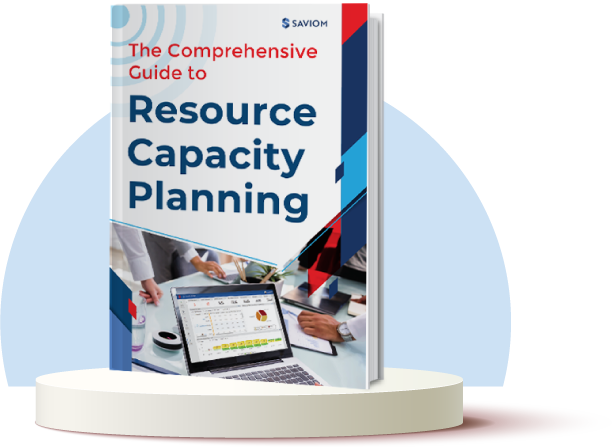“Nothing is more important to the success of a project than effective communication.” ~ Project Management Institute
In project management, good communication is the foundation that holds everything together. Despite its importance, poor communication remains a leading cause of project failure.
In fact, according to McKinsey, poor communication can significantly hinder project success, with 44% of executives linking team communication barriers to delays and failures.
This is why creating a proper project communication management strategy becomes indispensable. It helps eliminate information gaps and enhance collaboration through seamless exchange of project-related information throughout the lifecycle. Additionally, a well-defined framework enables project managers to choose the most effective communication channels to keep all stakeholders informed and engaged.
This article highlights the fundamentals of project communication management, its key types, and its importance. Toward the end, we will also explore the best practices to enhance project communication.
Let’s begin!
What is Project Communication Management?
Project communication management is the systematic process of sharing and managing all project-related information among stakeholders, the team, and involved members throughout the lifecycle. It ensures the right information is conveyed to the right people at the right time using the most appropriate channels.
Project communication management is one of the 10 key areas in PMBOK (Project Management Book of Knowledge). It includes three primary project communication management processes – planning, managing, and monitoring communication.
Now that we have understood the definition of project communication management, let’s know the types of project communication.
What Are the Types of Project Communication?
Project communication involves different types based on the mode and direction of information flow. Let’s have a look at them.
Interactive Communication
This is a two-way communication method where all stakeholders involved in the project exchange real-time information. Common methods include face-to-face communication, video calls, chat applications, etc. It is used when a discussion requires immediate feedback or decision-making. This type of communication encourages active participation and reduces misunderstandings.
Push Communication
Push communication is a one-way communication method where information is sent to relevant stakeholders without expecting an immediate response. This type of communication is useful when a project manager needs to share business cases, status reports, risk logs, change management logs, lessons learned, etc. It helps to keep stakeholders informed and helps maintain a record of communication.
Read More: What is Change Management in Project Management, and Why Is It Important?
Pull Communication
In this type of communication, stakeholders or teams access information at their convenience rather than directly sharing it with them. This practice allows project managers to store information in centralized repository, allowing stakeholders and teams to consume it at their own pace. For example, documents can be stored in Google Drive or the tool dashboard. This provides on-demand access to information and reduces unnecessary emails.
Electronic Communication
As per a recent study, “Email is the most widely used tool for client communication. While 15% of people use project management tools, and 10% of people use online chat tools.”
This highlights the growing role of online channels in project management. Electronic communication involves using digital platforms such as emails, messaging apps, video conferencing software, and project management tools to exchange information. This method enables remote and distributed teams to collaborate efficiently and facilitate quick updates and discussions.
Read More: Top 14 Project Management Methodologies: Tips to Choose the Right One
Face To Face Communication
It is the most personal and impactful form of communication, allowing for verbal and non-verbal cues such as facial expressions, body language, and tone of voice. For example, in-person meetings, one-on-one discussions, team huddles, and informal workplace conversations. Direct interaction fosters clarity, trust, and strong connections among team members.
Now that we have seen the types of project communication, let’s understand the significance of project communication management
Importance of Project Communication Management
Effective project communication management ensures that all stakeholders, teams, managers, and executives are aligned with the project scope, goals, timelines, and deliverables. Without effective communication management, teams risk working in silos, and projects can suffer from misunderstandings, delays, and inefficiencies.
Moreover, project communication management helps create an open and transparent communication environment, enabling teams to effectively share ideas, resolve conflicts, and coordinate project interdependencies. Moreover, it ensures that the team can access the right information at the right time, increasing productivity and streamlining workflows.
Furthermore, unexpected challenges and project scope changes are inevitable, and how a team communicates during a crisis determines its success. Project communication management ensures that project changes are handled effectively, minimizing panic and controlling the situation.
Lastly, a well-defined project communication management strategy enhances team morale, decision-making, and long-term project success. Whether through interactive meetings, reports, or digital tools, effective communication fosters a high-performance culture and ensures the successful delivery of projects.
Read More: – 10 Common Project Management Mistakes and How to Fix Them?
Now we know the importance, let’s move toward the steps to create a well-structured project communication management plan:
How To Create an Effective Project Communication Management Plan?
Below-mentioned are the key steps for creating an effective project communication management plan:
Identify and Understand Key Project Stakeholders
Every project involves multiple stakeholders, such as clients, project managers, team members, and executive partners, each with different communication needs. Understanding project stakeholders’ roles, expectations, and preferred communication methods is crucial for delivering relevant information efficiently.
For effective project communication management, stakeholders can be categorized based on their authority, interest, impact, and engagement needs. This helps determine whether they require real-time updates, periodic reports, or milestone-based communication, ultimately engaging key decision-makers while avoiding unnecessary details.
Read More: Who are Project Stakeholders? 7 Effective Ways to Manage Them
Define Clear Communication Objectives
Once stakeholders are identified, the next step is establishing clear communication objectives to ensure that discussions remain focused, relevant, and productive. For this, managers can record points to cover in project communication, such as project metrics, issue resolution plan, etc., to streamline information exchange and minimize ambiguity.
For example, during progress tracking meetings with clients and teams, the manager can highlight completed tasks, ongoing work, and any potential delays that may impact the timeline. On the flip side, during the resolution discussions, the focus should be on identifying the issue and its impact and assigning action items to resolve it.
Select the Most Effective Channels
To create a well-structured project communication management, managers can choose a communication channel based on urgency or the purpose of the conversation. These methods can be either verbal or non-verbal, such as daily stand-up meetings, phone calls, email updates to the team, instant messages, information sent through collaboration tools, etc.
For example, high urgency matters such as unexpected change requests in project scope require immediate attention to prevent delays. In such cases, verbal communication, such as quick project meetings, phone calls, or real-time messages allow for rapid resolution and swift decision-making.
Read More: What is a Project Meeting? 9 Strategies to Conduct an Effective One
Set a Consistent Communication Schedule
Next, based on stakeholders’ preferences, managers can decide on a communication timeline, such as how often it needs to happen, daily, weekly, or monthly. Daily updates are ideal for short check-ins and tracking immediate progress in Agile teams, while weekly updates help stakeholders review completed tasks.
Furthermore, communication frequency should align with project milestones and critical deadlines. For example, as projects near a key delivery date, daily communication becomes necessary to ensure stakeholders are informed and last-minute risks are addressed promptly.
Clarify the Roles & Responsibilities of the People Involved
Assigning clear communication responsibilities ensures that every team member understands their role in the project’s information flow. Without a structured approach, miscommunications and confusion can arise, affecting decision-making, causing delays, and reducing overall efficiency.
To achieve this, project members should assign ownership of key communication areas such as decision-making (who approves changes, budget, or resource allocation), approvals & reporting (who signs off project deliverables), and conflict resolution. (who is responsible for addressing conflicts). This establishes clear accountability for communication tasks.
Read More: How to Ensure Effective Conflict Resolution in a Hybrid Office?
Implement a Feedback Mechanism
Effective communication is not just about delivering information; it is about ensuring that messages are well-received and understood. A two-way communication approach fosters transparency, collaboration, and adaptability by allowing teams, stakeholders, and external partners to provide feedback on communication effectiveness.
Organizations should establish dedicated feedback channels such as post-meeting surveys, one-on-one check-ins, and structured retrospective meetings to facilitate open communications. These mechanisms help identify gaps and ensure communication remains clear, relevant, and impactful.
Establish A Code of Conduct
A professional code of conduct should be established with clear guidelines on the dos and don’ts of workplace communication in different scenarios. The project manager and the team members should stick to the company’s code of conduct and project-specific protocols to maintain decorum in all interactions.
For example, during virtual team meetings, the members must be punctual, come prepared with relevant updates, and actively listen without multitasking. They should communicate clearly and respectfully, ensuring messages are concise. Lastly, they should allow speakers to finish their points without speaking over them or dominating the conversation.
Read More: 7 Benefits of Virtual Team Building Activities for Remote Teams
Regularly Review & Improve the Plan
Project requirements and team dynamics evolve, making it essential to review and refine the communication plan regularly for better efficiency. To ensure seamless coordination, project managers can periodically assess the effectiveness of communication strategies, identify gaps, and implement necessary refinements.
Moreover, aligning communication checkpoints enhances team collaboration, prevents information silos, and keeps workflow efficient. Lastly, by refining the communication plan throughout the project lifecycle, managers can improve coordination, eliminate bottlenecks, and ensure a more adaptive and responsive project environment.
You can create a well-structured and effective project communication plan by following these best practices.
Best Practices to Improve Project Communication
Effective project communication is essential for project clarity, transparency, and success. Here is a practice that will improve communication at your workplace:
Keep Communication Concise & Focused
In project management, clear and concise communication is important for smooth information flow between stakeholders and project teams. To communicate effectively, everyone involved should avoid lengthy explanations and excessive details. Instead, they should focus on providing key points in a brief, structured, and direct manner.
Foster Open & Two-Way Communication
Keep communication always two-sided as it encourages the active participation of the teams and stakeholders. Rather than just providing feedback, managers should create an environment where team members feel comfortable sharing opinions, asking questions, etc. This can lead to better problem-solving, higher employee engagement, and building trust among the team.
Read More: 11 Effective Strategies to Enhance Employee Engagement
Document Key Discussions for Transparency
Documenting all the key points, decisions, and discussions of the project is crucial to avoid confusion and miscommunication. Recording key discussions and action items ensures that all stakeholders have access to the same information, which reduces conflicting interpretations and forgotten commitments. Additionally, written records serve as a valuable reference for future decision-making.
Use Visual Aid for Better Comprehension
Project managers often have to convey complex information, technical details, or large data sets, which can be overwhelming. Incorporating visual aids such as charts, graphs, infographics, Gantt Charts, etc., can help to break down intricate data into small digestible chunks. This allows members to quickly grasp key points, identify progress, and understand timelines without getting lost in excessive details.
Read More: What is a Gantt Chart: Benefits, Examples, & Best Practices
<h3style=”font-size: 24px;”>Tailor the Information Based on Your Audience
In a project, different stakeholders have different levels of involvement and information needs. Therefore, using the one-size-fits-all approach may lead to confusion, disengagement, or misalignment. To ensure clarity, managers must adapt their communication style based on the audience’s role, technical knowledge, and decision-making authority.
Focus on Conflict Resolution
Conflicts are inevitable in diverse, cross-functional teams where collaboration spans multiple departments and perspectives. However, handling these conflicts can directly impact the project’s success. Therefore, the manager must encourage open discussions, welcome opposing views, and actively listen to all parties. Moreover, they should stay neutral and solution-oriented and mediate disputes fairly and objectively.
Read More: 9 Effective Ways to Empower Cross-Functional Teams
Minimize Unnecessary Meetings
As per a study, “61% of people feel that they are wasting their time in meetings.”
As the number indicates, excessive or unstructured meetings can waste time, increase workload, and lower employee productivity. Therefore, before scheduling a meeting, the manager should determine whether the agenda can be achieved through mail or a project management tool. If a meeting is necessary, they should set a clear agenda, invite only relevant stakeholders, and establish timelines to keep discussions focused.
Practice Equity & Inclusiveness
Promoting equity and inclusiveness fosters a collaborative work culture. Managers should create an environment where all team members feel valued, trusted, and empowered to contribute. In addition, they should always encourage diverse perspectives and give opportunities to all to contribute equally. This way, teams can harness broader ideas and improve problem-solving.
Conclusion
Project communication is not just about sending and receiving updates but about sharing the correct information with the right people at the right time. With structured plans, managers can enhance collaboration, reduce risks of project failure, and improve outcomes. Moreover, a well-implemented project communication management plan is the key to ensuring that no critical information falls through the cracks, leading to smooth project delivery.
So, what strategies do you follow for effective project communication management in your firm?
The Glossary
Read More: Glossary of Resource Workforce Planning, Scheduling and Management












